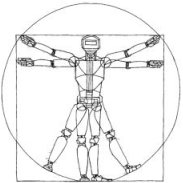Robotics: Science and Systems IX
Anticipating Human Activities using Object Affordances for Reactive Robotic Response
Hema Koppula, Ashutosh SaxenaAbstract:
An important aspect of human perception is anticipation, which we use extensively in our day-to-day activities when interacting with other humans as well as with our surroundings. Anticipating which activities will a human do next (and how) can enable an assistive robot to plan ahead for reactive responses in human environments. Furthermore, anticipation can even improve the detection accuracy of past activities. The challenge, however, is two-fold: We need to capture the rich context for modeling the activities and object affordances, and we need to anticipate the distribution over a large space of future human activities. In this work, we represent each possible future using an anticipatory temporal conditional random field (ATCRF) that models the rich spatial-temporal relations through object affordances. We then consider each ATCRF as a particle and represent the distribution over the potential futures using a set of particles. In extensive evaluation on CAD-120 human activity RGB-D dataset, we first show that anticipation improves the state-of- the-art detection results. For a new subjects (not seen in the training set), we obtain an activity anticipation accuracy (defined as whether one of top three predictions actually happened) of 75.4%, 69.2% and 58.1% for an anticipation time of 1, 3 and 10 seconds respectively. Finally, we also use our algorithm on a robot for performing a few reactive responses.
Bibtex:
@INPROCEEDINGS{Koppula-RSS-13,
AUTHOR = {Hema Koppula AND Ashutosh Saxena},
TITLE = {Anticipating Human Activities using Object Affordances for Reactive Robotic Response},
BOOKTITLE = {Proceedings of Robotics: Science and Systems},
YEAR = {2013},
ADDRESS = {Berlin, Germany},
MONTH = {June},
DOI = {10.15607/RSS.2013.IX.006}
}
